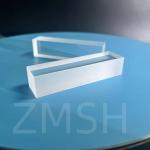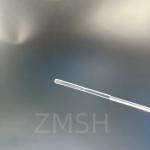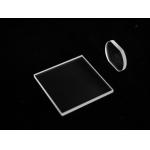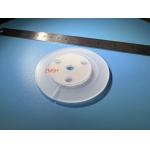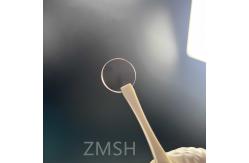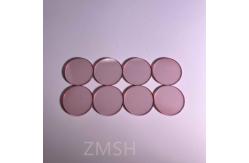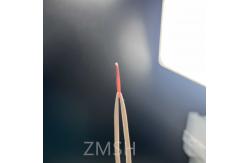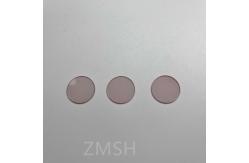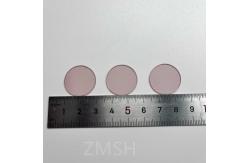Titanium sapphire crystal windows TI:SAPPHIRE CRYSTALS Outstanding
transparency and optical clarity Product abstractIntroducing our Titanium Sapphire Crystal Windows (TI:SAPPHIRE
CRYSTALS), renowned for their outstanding transparency and optical
clarity. Crafted from premium titanium and sapphire crystal, these
windows offer unparalleled performance in various optical
applications. With exceptional transparency and optical clarity,
our TI:SAPPHIRE CRYSTALS ensure precise observation and
measurement, making them ideal for high-precision instruments,
scientific equipment, and advanced optical systems. Experience the
difference with our Titanium Sapphire Crystal Windows, where
clarity meets durability for unparalleled performance. Product showcaseProduct properties| Chemical formula | Ti3+:Al2O3 | | Crystal structure | Hexagonal | | Lattice constants | a=4.748, c=12.957 | | Density | 3.98 g/cm3 | | Mohs hardness | 9 | | Thermal conductivity | 0.11 cal/(°C×sec×cm) | | Specific heat | 0.10 cal/g | | Melting point | 2050°C | | Laser action | 4-Level Vibronic | | Fluorescence lifetime | 3.2 µsec (T=300K) | | Tuning range | 660-1050 nm | | Absorption range | 400-600 nm | | Emission peak | 795 nm | | Absorption peak | 488 nm | | Refractive index | 1.76 @ 800 nm |
Exceptional Transparency: Our windows are crafted from high-quality
sapphire crystal, offering exceptional transparency that allows for
clear observation and measurement. Optical Clarity: With superior optical quality, our windows provide
excellent clarity, ensuring accurate transmission of light without
distortion or interference. Durability: Constructed with titanium and sapphire crystal, our
windows are highly durable and resistant to scratches, abrasion,
and corrosion, ensuring long-term reliability in demanding
environments. Precision: Designed for precision optical applications, our windows
maintain tight tolerances and optical specifications, enabling
precise measurements and observations. Versatility: Our Titanium Sapphire Crystal Windows are suitable for
a wide range of applications, including scientific instruments,
optical sensors, laser systems, aerospace equipment, and more. Enhanced Performance: By combining exceptional transparency,
optical clarity, and durability, our windows enhance the
performance and longevity of optical systems, ensuring reliable
operation in critical applications. Scientific Instruments: Used in spectrometers, microscopes,
telescopes, and other scientific instruments requiring precise
optical components for accurate observation and analysis. Laser Systems: Employed as protective windows or optical components
in laser systems for research, medical, industrial, and military
applications due to their high durability and optical clarity. Optical Sensors: Utilized in optical sensors for measuring light
intensity, wavelength, or other optical parameters in scientific
research, environmental monitoring, and industrial applications. Aerospace Equipment: Integrated into aerospace instruments and
equipment for navigation, communication, remote sensing, and
imaging applications, where reliability and performance are
critical. Medical Devices: Used in medical devices such as endoscopes,
imaging systems, and laser surgery equipment for high-precision
optical imaging and diagnostics. High-End Watches: Employed as watch crystals in luxury timepieces
for their scratch-resistant and optically clear properties,
enhancing the durability and aesthetics of the watch. Underwater Cameras: Incorporated into underwater camera housings to
protect the camera lens while maintaining optical clarity for
underwater photography and videography. Optical Windows: Used as optical windows in various optical
systems, including cameras, projectors, and sensors, to provide
protection while maintaining optical performance.
Q&AWhat is a titanium sapphire crystal?Titanium-sapphire refers to the lasing medium, a crystal of sapphire (Al2O3) that is doped with Ti3+ ions. A Ti:sapphire laser is usually pumped with another laser with a
wavelength of 514 to 532 nm, for which argon-ion lasers (514.5 nm)
and frequency-doubled Nd:YAG, Nd:YLF, and Nd:YVO lasers (527–532
nm) are used. |
